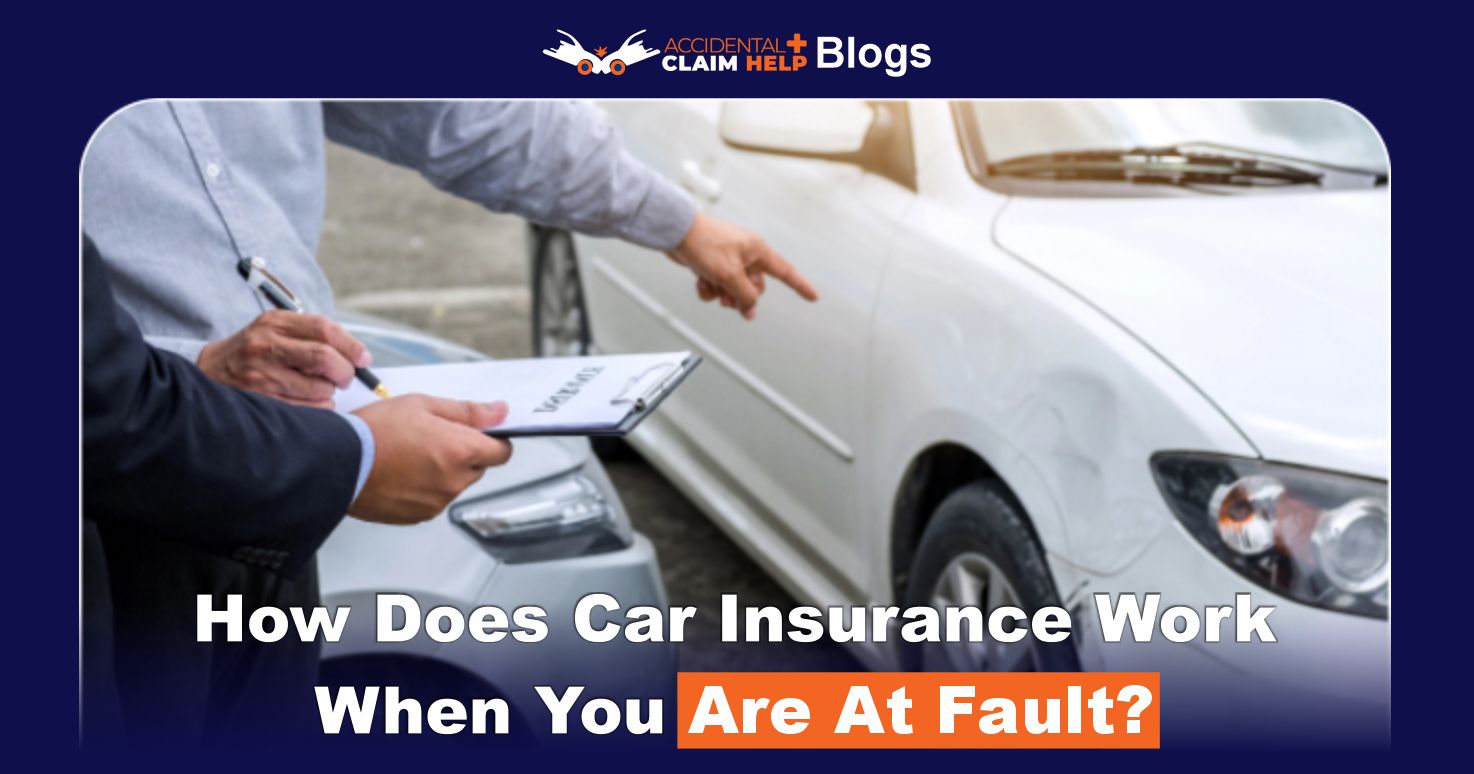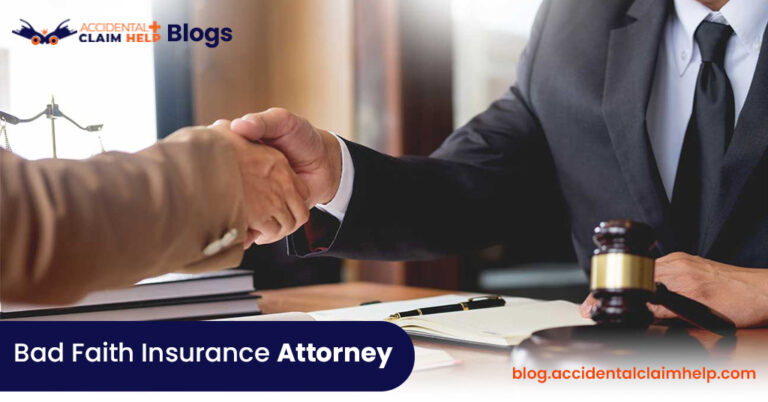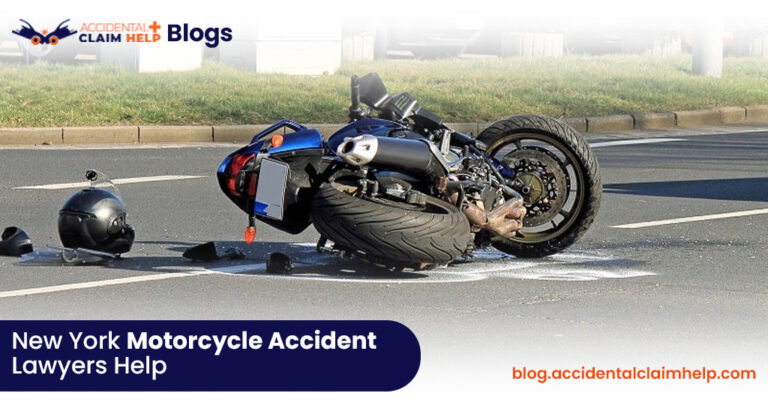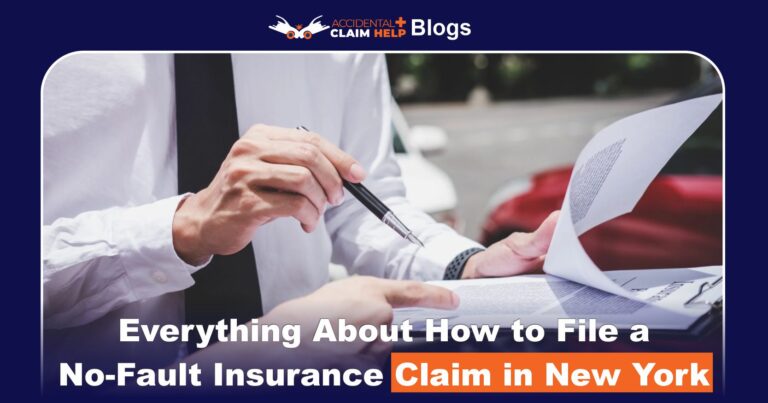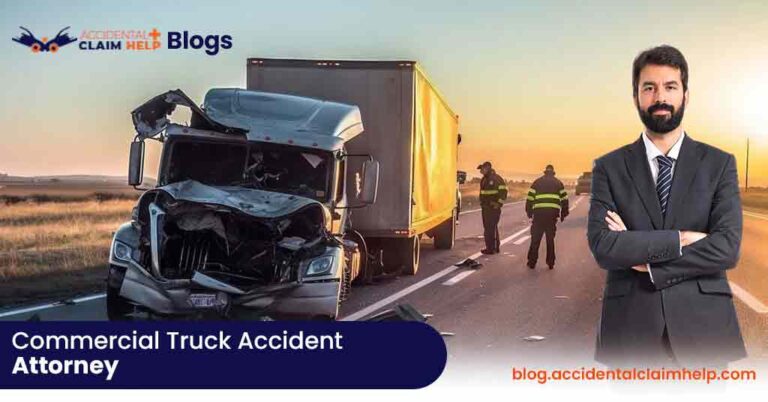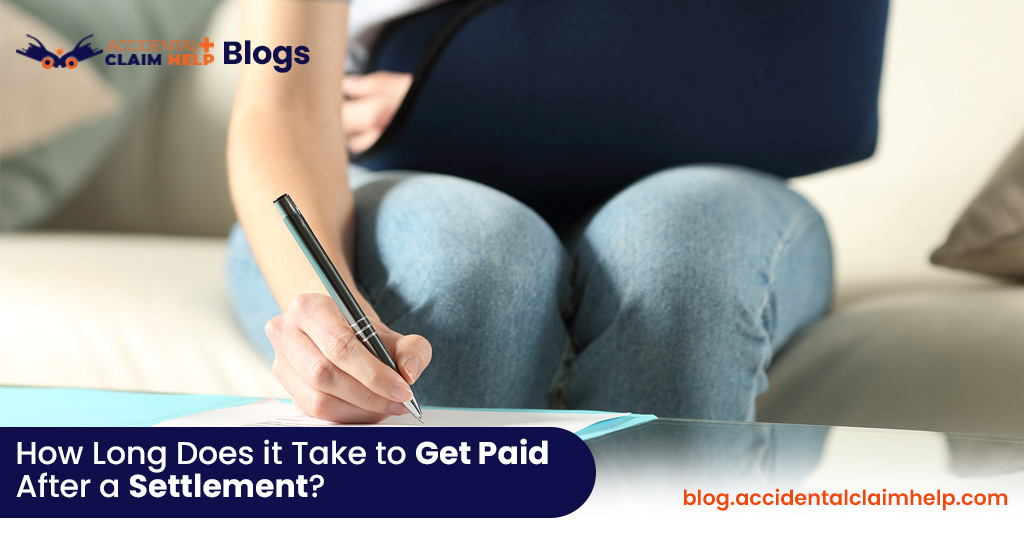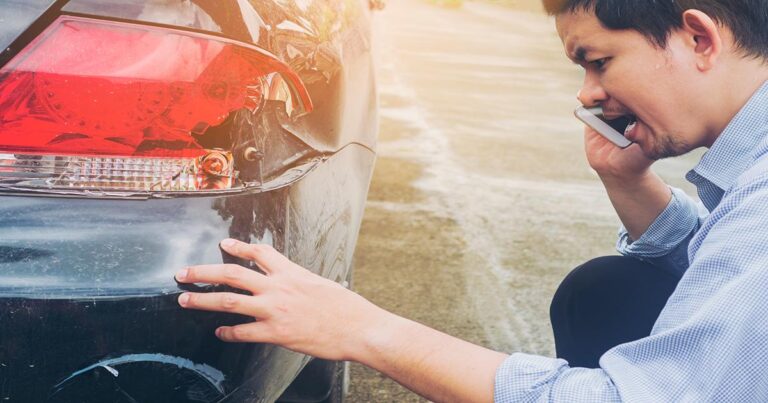How Does Car Insurance Work When You Are At Fault?
Getting into a car accident is stressful. But when you realize it was your fault, things can feel even worse. In most cases, your liability coverage helps. It pays for the other driver’s medical bills and vehicle repairs, up to your policy limit.
The process can feel complicated, but in the United States, it mostly boils down to one key concept: liability. Understanding this, along with the specific coverages you have and the laws in your state, is crucial for navigating the aftermath of a crash. This comprehensive guide breaks down what happens when you’re at fault in a car accident, detailing the claim process, financial implications, and how to best prepare for such an unfortunate event.
The Immediate Aftermath: Reporting the Crash
The very first steps after an accident are always the same, regardless of fault. You must prioritize safety and follow legal requirements.
- Check for Injuries: First, ensure that you, your passengers, and the occupants of the other vehicle are okay.
- Move to Safety: If possible and safe, move the vehicles out of traffic.
- Call the Police: In most states, you need to call the police if there are injuries, significant property damage, or if the accident involves a fatality. A police report is essential because it often contains a preliminary determination of fault—a critical document for the insurance claim.
- Gather Information: Collect the other driver’s contact and insurance information, take photographs of the scene, and get contact details from any witnesses.
How to Report a Car Accident When You Are At Fault to Insurance
You need to contact your auto insurance company as soon as possible, often from the scene. Most policies require prompt reporting. Do not try to settle the matter directly with the other driver. Let your insurer handle it.
- You will be speaking with a claims adjuster, and it is important to be honest and factual.
- Stick to the facts and avoid admitting blame or fault to the other driver or public, even if you think you caused the crash. The formal at-fault car insurance claim process is what ultimately determines who is responsible for paying damages.
The Core of the Matter: Your Liability Coverage
When you are determined to be the at-fault driver in a collision, the crucial part of your policy that kicks in is your Liability Coverage. This is the coverage that protects you financially by paying for the damage you caused to the other driver and their property.
Your policy has two main parts of liability coverage:
- Bodily Injury Liability: This pays for the other person’s medical bills, lost wages, and pain and suffering.
- Property Damage Liability: This pays for the damage to the other person’s vehicle, fence, building, or any other property damaged in the accident.
Liability Coverage When You Are At Fault
This coverage is mandatory in almost every US state. It directly addresses the question of what your insurance pays when you are responsible for crash.
- Payment Limits: Your policy has specific liability limits (e.g., $50,000 for bodily injury per person, $100,000 per accident, and $50,000 for property damage, often written as 50/100/50). Your insurance company will pay up to these limits for the other party’s losses.
- Legal Defense: Liability coverage also pays for your legal defense if the other driver sues you. Your insurer has a duty to defend you in court.
- Important Note: Your liability coverage only pays for the other person’s expenses. It will not pay for your own car repairs or your medical bills.
Am I Liable if I Cause a Car Accident and Only Have Minimum Liability?
This is a critical concern. If the total cost of the other party’s damages (medical bills, car repairs) exceeds your liability limits, you are personally responsible for the remaining balance.
For example, if the other driver’s medical expenses are $150,000, and your Bodily Injury Liability limit is $50,000, you could be personally sued for the remaining $100,000. This is why it’s often recommended to carry more than the state’s minimum required coverage.
What Happens if Damage Exceeds My Liability Limits and I’m At Fault?
If the damages are greater than your coverage, the following scenarios are possible:
- The injured party’s lawyer will likely pursue a lawsuit against you to recover the difference.
- Your insurance company may still try to negotiate a settlement for the full amount of your policy limit to protect you, but you remain personally exposed.
- In this scenario, an Umbrella Policy (which provides extra liability coverage above your car and home insurance limits) would have been your best defense.
Dealing with Your Own Car and Injuries
Since your liability coverage is protecting the other party, what pays for your own losses?
Does Collision Coverage Apply If I’m At Fault?
Yes, this is where Collision Coverage comes into play. Collision coverage is an optional part of your auto policy (often required if you have a car loan or lease).
- If you have this coverage, your insurance company will pay to repair or replace your own vehicle after an at-fault accident, regardless of who caused it.
- You will first have to pay your deductible (the amount you agree to pay out-of-pocket, typically $500 or $1,000), and then your insurer will cover the rest of the cost, up to your car’s actual cash value.
What Coverage Do I Need If I Might Be At Fault in a Crash?
To fully protect yourself, you need three main coverages:
- Liability Coverage (High Limits): To pay for the other person’s car and injuries.
- Collision Coverage: To pay for your own car repairs/replacement.
- Personal Injury Protection (PIP) or Medical Payments (MedPay): To cover your own or your passenger’s medical expenses, regardless of fault. This is essential, as your liability coverage won’t pay your medical bills.
How Fault Is Determined in Car Insurance Claims
The process for determining who is at fault is rarely instantaneous. It requires investigation by an insurance claims adjuster.
The At-Fault Car Insurance Claim Process
- Initial Investigation: The adjuster reviews the police report, photos, witness statements, and the accounts of both drivers.
- State Laws Applied: The adjuster applies the relevant state laws to the facts to determine who legally caused the accident (e.g., running a red light, rear-ending someone, etc.).
- Fault Determination: In most cases, one driver is found to be 100% at fault. However, in many states, fault can be shared.
At-Fault vs. No-Fault Car Insurance States
The biggest factor in the claims process is your state’s system. State by state at-fault car insurance rules vary significantly.
| System Type | How Liability Works | Who Pays Medical Bills? | Right to Sue |
| At-Fault (Tort) States | The at-fault driver’s Liability insurance pays for the other driver’s damages and injuries. | The at-fault driver’s insurer pays the victim’s medical costs. The at-fault driver uses their own MedPay/PIP. | Full right to sue the at-fault driver. |
| No-Fault States | Each driver’s own Personal Injury Protection (PIP) coverage pays for their own medical expenses and lost wages, regardless of who was at fault. | Each driver’s own PIP coverage pays. Property damage still falls to the at-fault driver’s Liability coverage. | The right to sue is restricted to cases involving severe injury or high medical costs (meeting a “verbal” or “monetary” threshold). |
Most of the US operates under an at-fault system, but about a dozen states are designated as no-fault.
What is Comparative Negligence in Car Insurance Fault States?
In many at-fault states, fault is not always 100% assigned to one driver. This is where comparative negligence or “shared fault” comes into play. If both drivers contributed to the crash, they can both be assigned a percentage of fault.
- Example: You were 70% at fault for running a stop sign, but the other driver was 30% at fault for speeding.
- In a comparative negligence state, the amount the other driver can recover from you is reduced by their percentage of fault. If their total damages were $10,000, they could only recover $7,000 (100% minus their 30% fault).
This rule exists in three forms across the US, but the main takeaway is that even if you are being at fault in a car crash & insurance claim, a shared-fault finding can sometimes reduce your financial liability.
The Long-Term Impact: Premiums and Driving Record
This is often the most significant concern for drivers: how fault affects your car insurance premium.
How Much Will My Premium Go Up If I’m At Fault in a Car Accident?
Unfortunately, an at-fault accident is one of the quickest ways to see a spike in your insurance costs.
- Average Increase: On average across the USA, drivers who cause an accident see their premiums increase by around 40% to 50% at their next renewal.
- Factors Affecting the Hike: The exact amount depends on several factors:
- The Severity of the Accident: A high-cost claim (especially with bodily injury) will trigger a much higher increase than a minor fender-bender.
- Your Driving History: A driver with a clean record will usually face a smaller hike than a driver with multiple recent violations.
- Your Insurance Company: Different companies have different risk assessment models and surcharge schedules.
The rate increase typically lasts for three to five years—the duration that the at-fault accident stays on driving record and affects insurance rates. After that period, the surcharge is usually removed, assuming you maintain a clean driving record.
Can I Avoid Premium Increase After an At-Fault Accident?
In some limited cases, you might be able to avoid a rate hike:
- Minor Damages: If the damage is very minor, you may choose to pay for the other party’s repair costs out of pocket, thus avoiding filing a claim with your insurer. This is only advisable if the cost is low and you are absolutely sure the other party won’t file a claim later for unseen injuries.
- Accident Forgiveness: Many insurance companies offer “accident forgiveness” as a loyalty perk or an optional add-on. This generally ensures your first at-fault accident won’t raise your premium.
Being At Fault in a Car Crash & Insurance: The Bottom Line
When you are the at-fault driver, your Liability Coverage is the shield that protects your personal assets by paying for the other party’s losses. Your Collision Coverage is what repairs your car. If you have low liability limits, you face a significant risk of having to pay for the excess damages yourself. Finally, nearly every at-fault claim will lead to a substantial, though temporary, increase in your car insurance premium. The best strategy is always to drive safely and carry adequate coverage limits to manage your risk.

